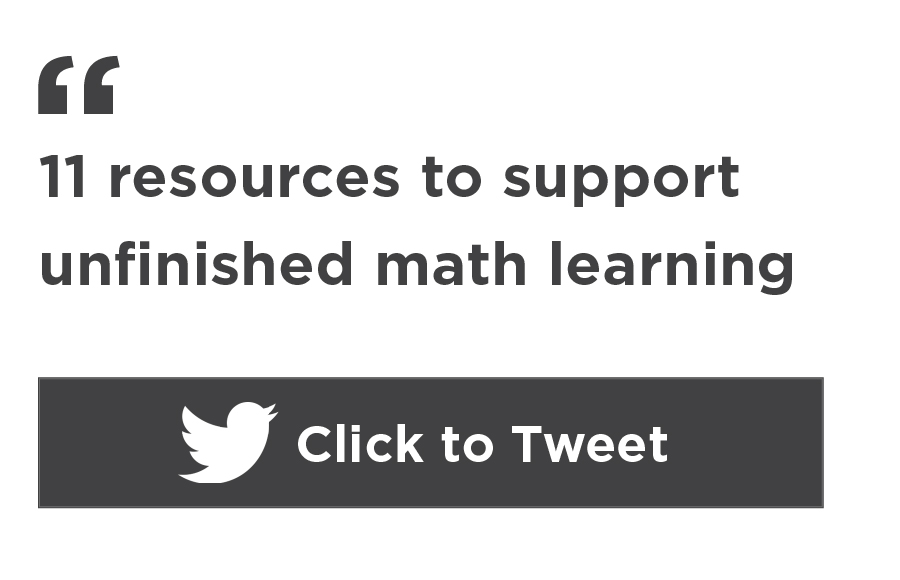The trial by fire of online learning last spring showcased how creative, resilient, and dedicated teachers are. We know this school year will bring more challenges and unknowns. Teachers will need to strategically utilize all the tools available to them to support student learning and fill gaps that resulted from the unexpected shift to online learning. This is especially important in math, where the learning loss is expected to be particularly acute.
Teachers, you may approach this work in a variety of ways, from accelerating through the missed content to incorporating that content into on-grade lessons for related standards. (For more details on these different options, see Kick-start fall planning: 4 principles for instructional leaders.) Regardless of how you go about it, making the most of digital content and online resources can help you be more efficient in addressing unfinished learning.
First, set your priorities
A strong understanding of the structure and coherence of the mathematics standards is needed to make the most of instructional time this year. Which of the previous grade’s standards are the most critical to current and future learning? Which relate directly to content you will introduce this year?
Student Achievement Partners has created a guide to priority instructional content for 2020–2021 to help you make these decisions. Here are some tips on how to use it:
- If you are accelerating learning: Look at the previous grade’s standards to determine what to address and what to leave out.
- If you are including content from the previous year: Look at the current grade’s standards to see how the standards connect across grades.
Student Achievement Partners’ Coherence Map for the Common Core is another great resource for understanding the progression of the math standards. As you prepare to teach an on-grade lesson, simply drill down to that standard and then use the map to determine precursor standards.
Second, look to tools you’re already using
Once you have identified the content you need to revisit, what’s the best way to get it to the students who need it? MAP® Growth™–aligned teacher resources like Teacher Advisor with Watson and Curriculum Works provide just-right lesson resources for either reteaching your whole class or more targeted small-group instruction.
Another good way to reteach and reinforce previous grade content is to leverage online content providers that create personalized learning paths. The table below lists 11 providers that connect to MAP Growth data and the grade bands for which they have math content.
With MAP® Accelerator™, you can also connect MAP Growth scores to personalized learning pathways in Khan Academy for grades 3–8.
Whether or not you use MAP Growth, once the content provider has created the suggested learning path, you can customize paths to focus on missing content related to the on-grade standard you are teaching. You can also remove non-priority content from the path. Narrowing learning paths to reteach and reinforce content that students may have missed helps prepare students for the introduction of on-grade concepts.
You’ll also want to monitor progress. Many of these programs provide teacher dashboards that will help you see progress overall as well as on the skill level. This information can help you adjust learning paths appropriately and inform whole-class and small-group instruction.
Need more?
Regardless of what school looks like for you this year, we know you will rise to the challenge for every child in your class. Check out the articles below for additional support while navigating the year ahead.
- “16 free digital resources for reading, math, and MAP Growth to use at home during the COVID-19 crisis”
- “How to support reading and math skills during COVID-19”
- “6 familiar tools you can lean on during school closures”
- “Here’s how to identify—and close—knowledge gaps”
- “5 patterns in math skills of new kindergarteners—and 4 ways to address them”
- “19 formative assessment strategies for online teaching”
- “10 ways to create a community of learning in a virtual setting”
- “Parent strategies for improving their child’s math”
- “Classroom ready: Be there for your teachers with assessment support, curriculum connections, and professional learning”











